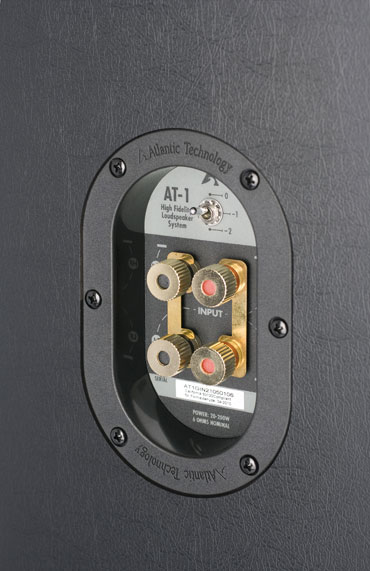First Listen: Atlantic Technology AT-1 H-PAS Speakers Page 2
The AT-1's "real" extended bass is not so easy to hear with typical pop music, but with the right material it becomes almost obvious. For example, the famous bass drum - the "drum that launched ten thousand audiophiles" - on a Telarc recording of Elgar's "Pomp & Circumstance Marches" (it's commencement season as I write this) sounded tight, deep, and resonant, just as it should. And you simply must have solid output to below 35 Hz to hear that detail.
But careful selections from the pop canon proved capable of showing off the AT-1's abilities as well. "Gaia," from James Taylor's Hourglass, includes a very low, resonant big-drum-and-reverb event that bass-limited speakers merely hint at, but which the H-PAS towers delivered with remarkable authority, clarity, and freedom from bloat.
I happened to have on hand a pair of almost identical-sized (and similarly priced) towers from another maker employing three 5.25-inch drivers per speaker and conventional vented alignment. Direct comparison was revealing: On the conventional towers, the fundamentals of those last drum strikes from "Gaia" were almost entirely missing. What I heard instead was a "doubling" of content an octave higher, which yielded obviously muddier, blowsier, lower-impact results.
North of, say, 150 Hz, the AT-1 strikes me as a speaker design straight out of the Atlantic Technology playbook: tight, precise imaging; accurate, unromantic midrange; slightly forward, though unexaggerated, top octaves. By "tight and precise" I mean a musical soundstage that is well defined and easily localized left to right, but without a great deal of depth - something fairly typical of speakers with midrange-tweeter-midrange layouts like the AT-1's. (In my view this "tightness" becomes an asset in multichannel playback, where it helps to support clarity and spatial precision.) And by "unromantic" I mean free of the slightly enriched output in the male-voice octaves that makes so many speakers sound a touch warmer.

While I found the AT-1's horizontal coverage to be excellent, its vertical "sweet-spot" was fairly narrow. This made speaker positioning critical: In my room, tilting the speakers back a fair degree by adjusting the supplied spikes higher in front delivered easily heard gains in openness, clarity, and treble "air." Reproduction of massed strings was now vibrant and "toothy" but unstrained, and well-recorded cymbals were conveyed with a lifelike, airborne sizzle. (The speaker's rear-panel tweeter level might also come into play here; I listened with the "0 dB" setting selected.)
The AT-1 is not perfect: Like all floor-standing speakers it requires a certain amount of space for optimum placement relative to the walls and each other, and like all full-range designs, it is subject to the oft-divergent imperatives of practical and acoustical considerations - something that a sub/sat layout often mitigates. And while the Atlantic design played loud as hell without complaint (absorbing 150 watts per speaker) and delivered powerful deep bass, I detected the faintest of timbral tickles on just a few low notes, almost as if a shred of Kleenex was oh-so-softly blowing in the port. This was perhaps an H-PAS artifact, but it could also have been merely a speaker/room interaction.
- Log in or register to post comments




















































